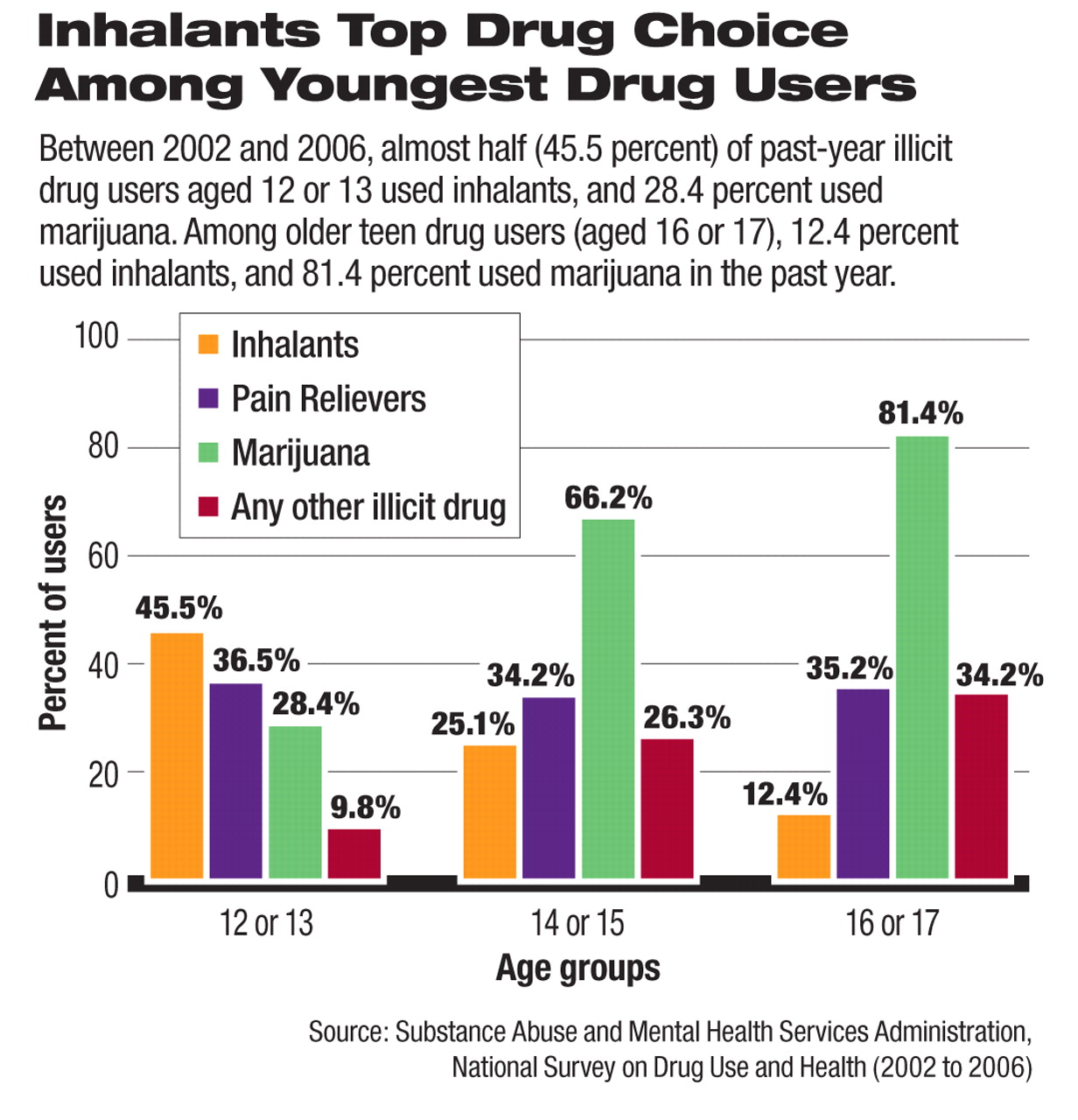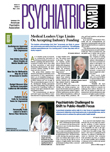Almost 1 in 5 first-time adolescent drug users begins with huffing fumes from household products despite the fact that these chemicals are dangerous and sometimes lethal, according to a federal report released in March.
Data from the report, “Trends in Adolescent Inhalant Use: 2002-2007,” show that 17.2 percent of youth aged 12 to 17 initiated drug use by using an inhalant such as glue, air fresheners, hairspray, or paint solvents. The most common gateway drug is marijuana (including hashish), used by 56.3 percent of initiates in 2007, with the second being painkillers, at 23.5 percent.
Among past-year initiates, use of nitrous oxide, or “whippits,” dropped from 31.6 percent in 2002 to 16.3 percent in 2007. However, use of aerosols other than spray paint rose from 12.6 percent in 2002 to 25 percent in 2007, according to the findings.
The highest proportion of inhalant initiates—29 percent—huffed glue, shoe polish, or toluene in 2007.
Overall, inhalant use dropped among youth aged 12 to 17 between 2002 and 2007. In 2002, 4.4 percent reported past-year inhalant use, compared with 3.9 percent in 2007.
The findings of the survey, conducted by the Substance Abuse and Mental Health Services Administration (SAMHSA) in conjunction with the National Inhalant Prevention Coalition (NIPC), were presented at a press conference in Washington, D.C. The press conference is held each March to mark National Inhalants and Poisons Awareness Week.
While overall inhalant use among the surveyed youth dropped during the five-year period, perceptions of danger among eighth graders surveyed as part of the National Institute on Drug Abuse's Monitoring the Future Study dropped during that same time span—in 2004, 38.7 percent of eighth graders perceived inhalant use as dangerous, compared with 33.9 percent in 2007.
“Among youth, perception is reality,” said Harvey Weiss, NIPC executive director, at the conference. “When they believe inhalant use is neither risky nor unacceptable, use of inhalants increases,” he noted.
The data come from the National Survey on Drug Use and Health, an annual survey conducted by SAMHSA to estimate national drug use rates and prevalence and the prevalence of alcohol and substance use disorders and other mental health problems.
Researchers from RTI International, a research firm located in Research Triangle Park, N.C., collected the data, which came from 136,449 people aged 12 to 17 who were interviewed in their homes between 2002 and 2007. The data were then extrapolated to population estimates.
According to these estimates, 1 million adolescents aged 12 to 17 used inhalants during the preceding year, despite the fact that the products can pose significant health hazards and even cause sudden death. An estimated 23 million people aged 12 and older reported using inhalants at some point during their lives.
Experts at the press conference emphasized the need for a greater public awareness of the health risks posed by inhalant use and endorsed efforts to restrict access to inhalants.
There to share her experience with inhalant use and addiction was Allison Fogarty, a young adult from Rhode Island in recovery from inhalant addiction since May 2008. “Having to stay clean from the use of inhalants,” she observed, “is still a daily struggle that will get easier with time.”

